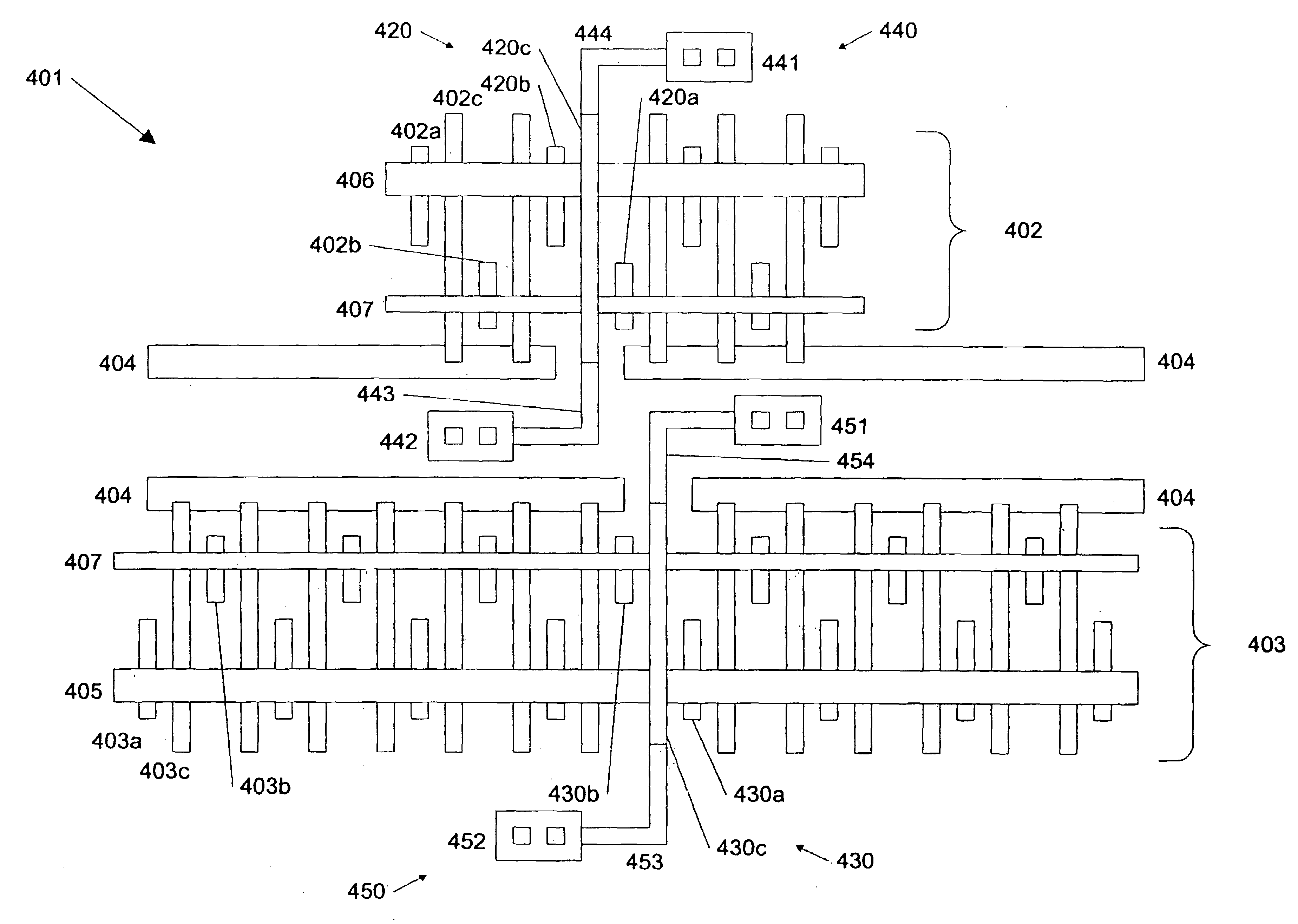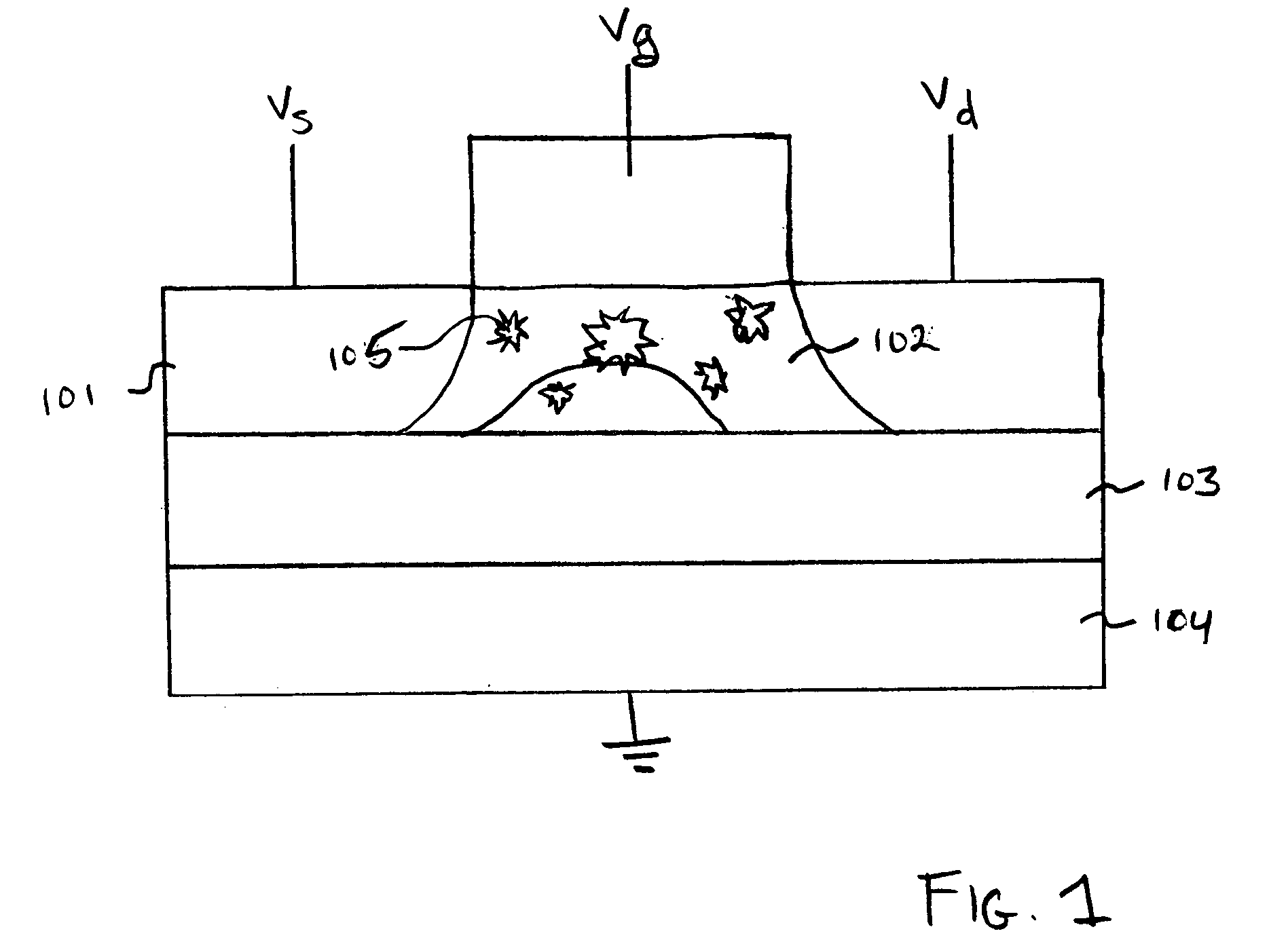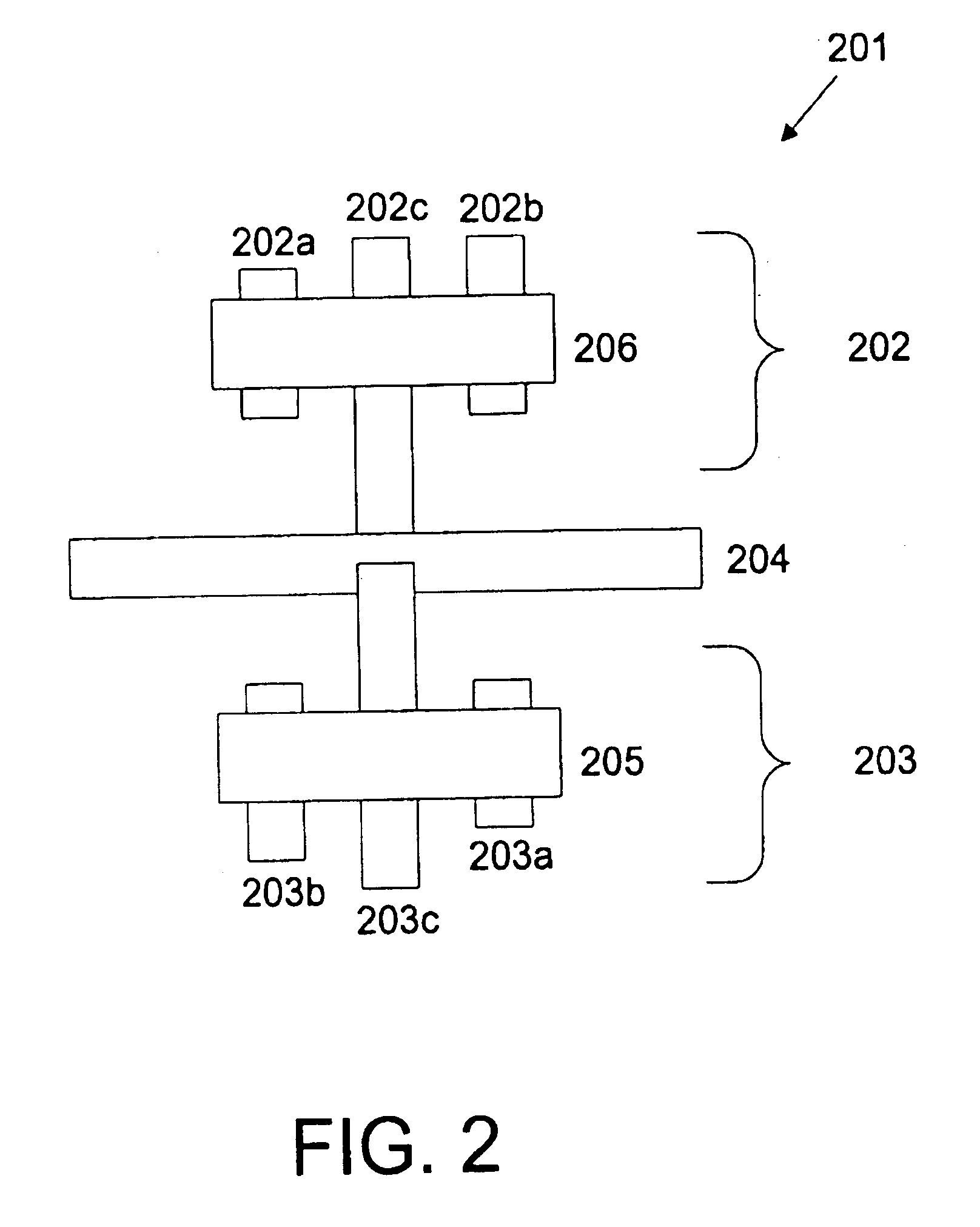Temperature sensor for high power very large scale integration circuits
a technology of integrated circuits and temperature sensors, which is applied in the field of temperature sensors, can solve the problems of no current solution to the problem of not accurately measuring the real-time internal temperature of an integrated circui
- Summary
- Abstract
- Description
- Claims
- Application Information
AI Technical Summary
Benefits of technology
Problems solved by technology
Method used
Image
Examples
second embodiment
[0044]The new elements of the second embodiment include current pad 1102 and current pad 1103. By placing the FETs into a sub-threshold state by applying the proper voltages to Voltage 405 and Vout 40, the sub-threshold leakage current between the sources and the drains can be measured at pads 1102 and 1103. Then the temperature can be determined by calculating the slope of the line formed by the plot of Vq / kT.
third embodiment
[0045]The third embodiment PFET 1110 is shown comprising source 1110a, drain 1110b, and gate 1110c. Generally, it is noted that PFET 1100 has been electrically isolated from Voltage 405 and Vout 407. Connected to source 1110a is pad 1104, and connected to drain 1110b is pad 1105. In this embodiment, the leakage current of the single PFET 1110 can be determined by placing the PFET 1110 into a sub-threshold state by applying the proper voltages to pads 1104 and 1105, the sub-threshold leakage current between the source 1110a and the drain 1110b can be measured at pads 1104 and 1105. Then the temperature can be determined by calculating the slope of the line formed by the plot of Vq / kT.
[0046]FIG. 5 is a chart illustrating the effect of multiple active fingers. Shown in FIG. 5 are the junction and layer M1 temperature rises. As can be seen, an increase in the active number of fingers increases the junction temperature. Also, a close thermal coupling between the fingers within the same b...
PUM
 Login to View More
Login to View More Abstract
Description
Claims
Application Information
 Login to View More
Login to View More - R&D
- Intellectual Property
- Life Sciences
- Materials
- Tech Scout
- Unparalleled Data Quality
- Higher Quality Content
- 60% Fewer Hallucinations
Browse by: Latest US Patents, China's latest patents, Technical Efficacy Thesaurus, Application Domain, Technology Topic, Popular Technical Reports.
© 2025 PatSnap. All rights reserved.Legal|Privacy policy|Modern Slavery Act Transparency Statement|Sitemap|About US| Contact US: help@patsnap.com



